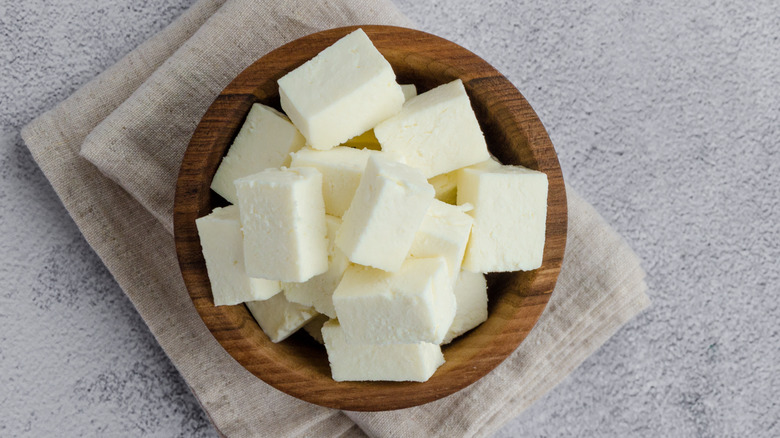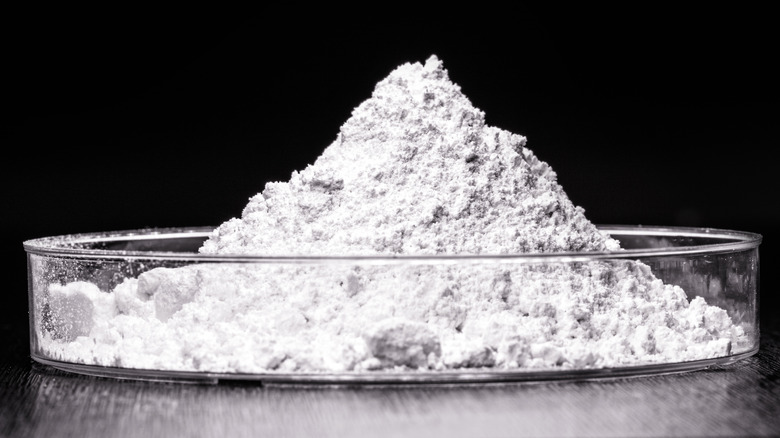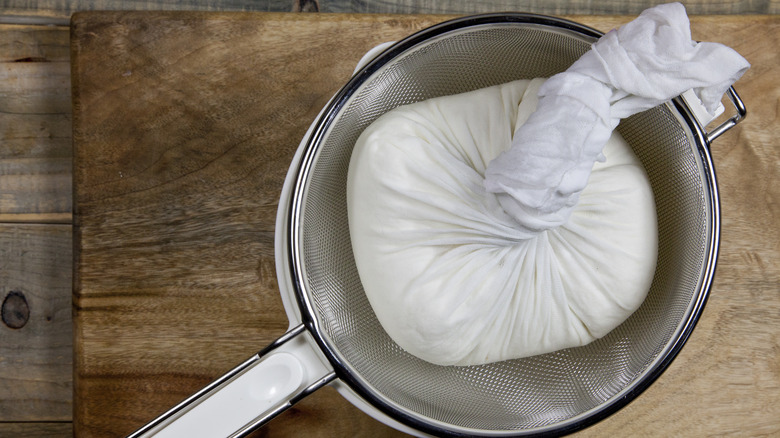The Science You Need To Know For The Best Homemade Paneer
Which Indian dish do you most want to try? Perhaps you should consider homemade paneer as a contender. It's a mild-tasting, firmly set, extremely versatile Indian cheese often added to vegetarian recipes. These include curry salads, fried noodles or rice, tikka masala, and more.
It's not too hard to find paneer sold in block form at the grocery store or online, but it's even easier to create at home. The recipe is as simple as milk, acid, and (if you really want to excel) some salt. In fact, paneer makes a great way to avoid food waste if you have extra milk (ideally full-fat and raw) and something acidic like lemon juice on hand. The end product will last for another week or two. Its leftover whey also makes a good savory sauce that's easily sweetened with honey, though for best results, you'll want to get salty with science.
Salt makes the cheese firmer
Calcium chloride, a whitish salt, is quite the useful compound. Its solid state at room temp plus its ability to dissolve in water means it often comes in handy for chefs. The fact that milk is already rich in calcium also makes this stuff feel right at home with paneer.
Paneer is made by boiling and stirring whole milk in a container, then turning off the heat and — after a few minutes of cooling — adding a dash of acid. Once the acid is stirred in, the milk starts to curdle. When that's done, the cheese is left to rest for a couple minutes, then the leftover whey is strained out. Last but not least, the milk is weighed down for a couple of hours to drain it and give it shape before refrigeration. The fruit of this labor? Spongy, white cheese with an acidic, nutty, sugary taste.
Heat and acid are primarily responsible for firming up this soft cheese, but salt is the secret ingredient for the best possible texture and consistency. Adding a pinch of calcium chloride before coagulation will increase the quality of its yield, making paneer compact and easily sliceable. That's nothing to feel salty about!
Is it art or science?
The interaction between acid, heat, and salt is an interesting bit of gastronomy. But does one really need to understand the science behind this tip to use it correctly? The social science of history suggests not.
Nowadays, paneer is sometimes referred to as "Indian cottage cheese," but its origins are a bit less firmly established than that name suggests. Cheesemaking in India may date back — roughly 5,000 years ago — to its first-known civilization: Indus Valley. During the second millennium B.C., a sacred Hindu text also documented the existence of two paneer-esque cheeses under different names. However, when religious traditions made the curdling of cows' milk taboo, those cheeses fell out of favor for centuries. It wasn't until the 1500s or 1600s that modern paneer was introduced by Afghans and Iranians (using rennet enzymes) and, after them, the Portuguese (using fruit-or-veggie acids).
Back then, it's doubtful cheesemakers fully understood how coagulation worked (or even knew adding calcium chloride was ideal). So, don't sweat the small molecular gastronomy stuff! The best paneer — salty or not — is the kind homemade with care.


